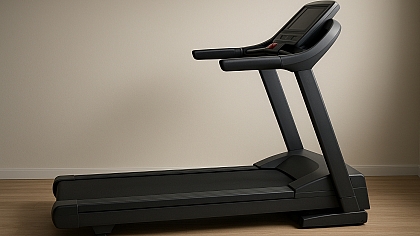
A Step-by-Step Guide to Achieving Better Posture Alignment
In today's modern workplace, where long hours at desks and screens have often become the norm, maintaining good posture might seem like a forgotten art. However, the benefits of proper posture extend far beyond appearances. From enhanced physical balance to increased strength and flexibility, the advantages are numerous.
In this guide shared courtesy of Qasli, we'll explore key steps to kickstart your journey toward improved posture and the transformative effects it can have on your overall well-being.
Discover the Foundation of Good Posture
Sitting forms a significant part of our daily routine, so obviously, how we sit matters a great deal. Start by aligning your head and neck with the rest of your spine. Avoid slouching or leaning forward. Instead, sit upright, distributing your body weight evenly across your hips. This foundational adjustment minimizes strain on your back and neck, setting the stage for a healthier posture.
Improve Your Core
Your core muscles – comprising the abdominals, glutes, and back muscles – play a pivotal role in maintaining proper alignment. Engage these muscles regularly through targeted exercises. Strengthening your core not only supports your spine but also improves your body's overall stability, preventing slouching and promoting an erect posture.
Use Good Ergonomics
More often than not these days, we are glued to screens. Ensure your computer monitor is at eye level to avoid tilting your head excessively. Additionally, position your keyboard and mouse within easy reach to prevent straining your arms and shoulders. These simple ergonomic adjustments reduce the risk of poor posture caused by prolonged screen time.
Improve Your Balance
Physical balance and posture are closely intertwined. Practices such as yoga, Pilates, or even simply standing on one leg can enhance your body's sense of balance. A stable foundation contributes to a more confident and aligned posture, minimizing the risk of slumping or hunching.
Boost Your Flexibility and Strength
Improving posture involves enhancing both flexibility and strength. Incorporate stretching routines into your daily regimen to release tension in tight muscles. Simultaneously, engage in strength-building exercises to support your spine and maintain an upright stance. A balanced approach to fitness contributes to improved posture over time.
Find the Right Ergonomic Chair
Especially if you’re working from home, investing in a supportive office chair pays dividends in posture improvement, and this is a good option to consider if you're aiming for long-term spinal health – not to mention creating a more positive home environment! Look for chairs that offer proper lumbar support, cushioning, and adjustable features to meet your specific ergonomic needs. A well-designed chair not only encourages optimal alignment but also reduces strain on your back and neck, fostering long-term posture health.
Get Organized for Success
If you seek chiropractic care to fine-tune your posture, maintaining a well-organized set of medical records can make a significant difference in the quality of care you receive. One practical way to keep all your relevant documents in check is to digitise them, converting all your medical histories, x-rays, and treatment plans into PDFs for easy access and to facilitate streamlined appointments. With an organized approach to your medical documentation, chiropractic care combined with proactive posture practices can yield remarkable results in your alignment and well-being.
Better posture is within your reach, and the benefits are substantial. From enhanced physical balance and core strength to increased flexibility and a reduced risk of strain-related discomfort, the transformation is real. By implementing these simple steps into your daily routine, you can embark on a journey toward improved posture and a healthier, more confident you.









